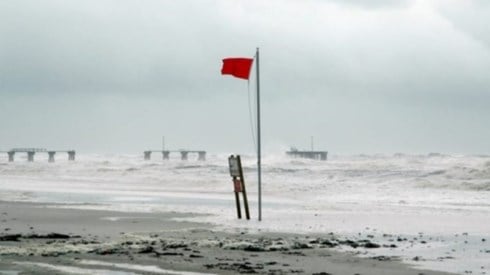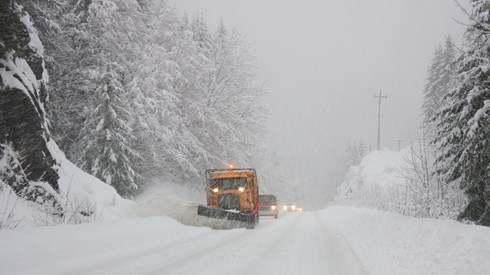2022 Added to 6-Year Trend of Unprecedented Catastrophe Losses

March 08, 2023

The notion of "it only takes one" to create a costly catastrophe year for the insurance industry was highlighted once again in 2022 by September's Hurricane Ian, a new report from Moody's RMS notes.
With Hurricane Ian's insured losses estimated as high as $74 billion, the storm turned what looked like a potentially mild hurricane season into a costly one indeed, according to the 2022 Catastrophe Review from Moody's RMS.
Ultimately, 2022 added some $120 billion in insured losses to a total of $500 billion accumulated between 2017 and 2021, Moody's RMS says. The 2017–2021 period also saw natural catastrophes causing some $1.2 trillion in economic losses around the world.
"The unprecedented losses year after year in the last 6 years, with an average of more than US$100 billion per year, pose significant challenges to understanding, managing, and pricing future weather-related risks," Mohsen Rahnama, chief risk modeling officer at Moody's RMS, wrote in the February 28, 2023, report.
Mr. Rahnama notes that the significance of Hurricane Ian led Moody's RMS to send two teams of modelers, engineers, and experts to the area within a few days of landfall to conduct field research and survey wind, storm surge, and flood damage.
The risk modeler sent an engineering team back to the affected area in November to gather further data about cleanup, recovery, and construction. That team also met with clients in the area to gain deeper understanding of the claims process, post-event loss amplification, and the impact of inflation on construction materials, social inflation, and more.
Recent hurricanes have shown that the claims process can take several years to close, Mr. Rahnama says. "In most cases, the total loss estimate exceeded the initial market estimates," he wrote. "We believe that this will be the case for Ian as well, given the size of the event and as the costliest hurricane in the last 3 decades."
Last year's catastrophe losses also included a major flood in Australia, hailstorms in France, winter storms in North America, and a heat wave and wildfires in Europe that resulted in billions of dollars in economic and insured losses, according to Mr. Rahnama. Several severe convective storm events in the United States and a late-December storm in the Northeast United States added significantly to 2022's losses, he says.
"The increase in frequency and severity of weather-related events was a major contribution to overall losses in every region," Mr. Rahnama says. "The record losses of 2017–22 are a wake-up call for the industry to better assess, manage, and transfer the risk of future climate-related events."
The unprecedented catastrophe losses in recent years are largely the result of changes in the landscape of climate-related risks, he says. "Secondary perils such as flood, wildfire, and severe convective storms, along with large exposure changes, social inflation, and non-modeled losses, contributed significantly to overall economic and insured losses," Mr. Rahnama says.
Increasing flood losses across Asia, Australia, Latin America, and the United States, along with the significant increase in severe convective storms, winter storms, wildfires, and heat stress events, show further evidence of the impact of climate change, according to Mr. Rahnama.
"From the insurance perspective, historically these events have been considered as secondary perils," Mr. Rahnama wrote. "However, in recent years, the magnitude and frequency of these costly events have highlighted the rapidly changing landscape of risk. Due to this, the industry and regulatory bodies must take different approaches to managing future risks."
It will be necessary for insurers to evaluate and revise their underwriting approaches to consider climate change in their risk selection, while also considering attritional losses, changes in exposure, undervaluation and post-event loss amplification," Mr. Rahnama suggests.
In her own portion of the report, Sarah Hartley, manager of Moody's RMS event response, notes that 2022's catastrophe experience raised awareness of a variety of possibilities. Among them were the possibility of November hurricanes by way of Hurricane Nicole and European windstorm risk as Dudley, Eunice, and Franklin caused widespread damage across Europe, with the combined impacts of Dudley and Eunice producing the most significant European windstorm losses in years.
Meanwhile, Australia experienced its costliest natural catastrophe event on record when unprecedented rainfall throughout Queensland and New South Wales produced devastating floods that produced exceptional losses, Ms. Hartley says. The Insurance Council of Australia estimated losses from those floods at 5.65 billion Australian dollars, the Moody's RMS report says.
"In an ever-changing, developing market landscape of global catastrophes, response to the most impactful events requires analysis of information from a variety of sources to provide a comprehensive view of risk," Ms. Hartley wrote. "The 2022 hurricane season saw the timely return of real-time in-person reconnaissance following the restrictions of the COVID-19 pandemic. This on-the-ground approach provided valuable insights in the aftermath of Hurricane Ian and enhanced our support to clients during this unique and historic event."
Ultimately, a critical balance between timeliness and accuracy is essential to providing credible analysis of catastrophe events, Ms. Hartley says.
March 08, 2023





